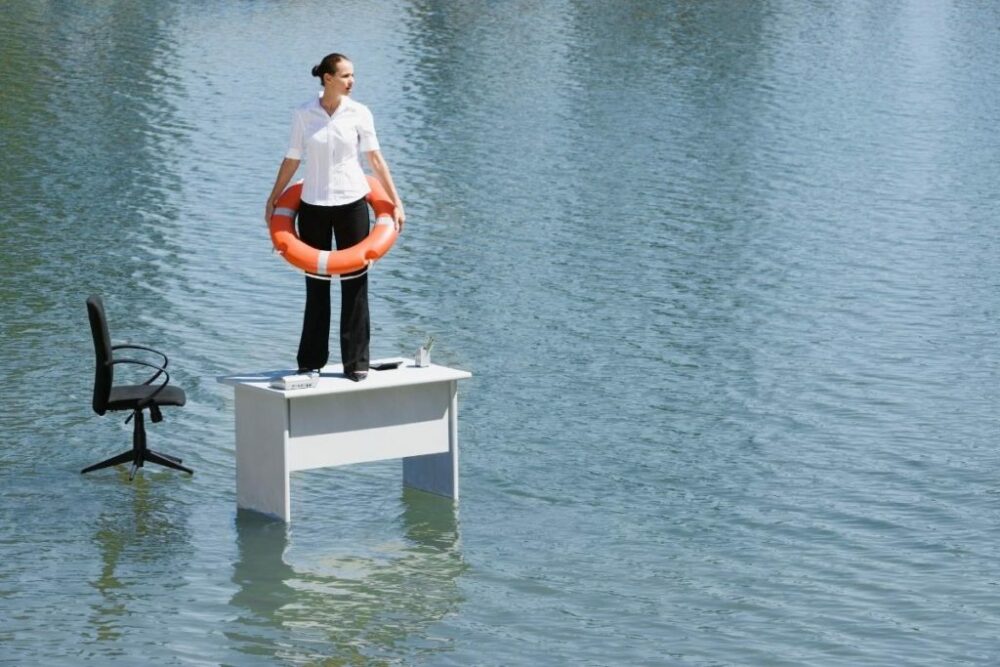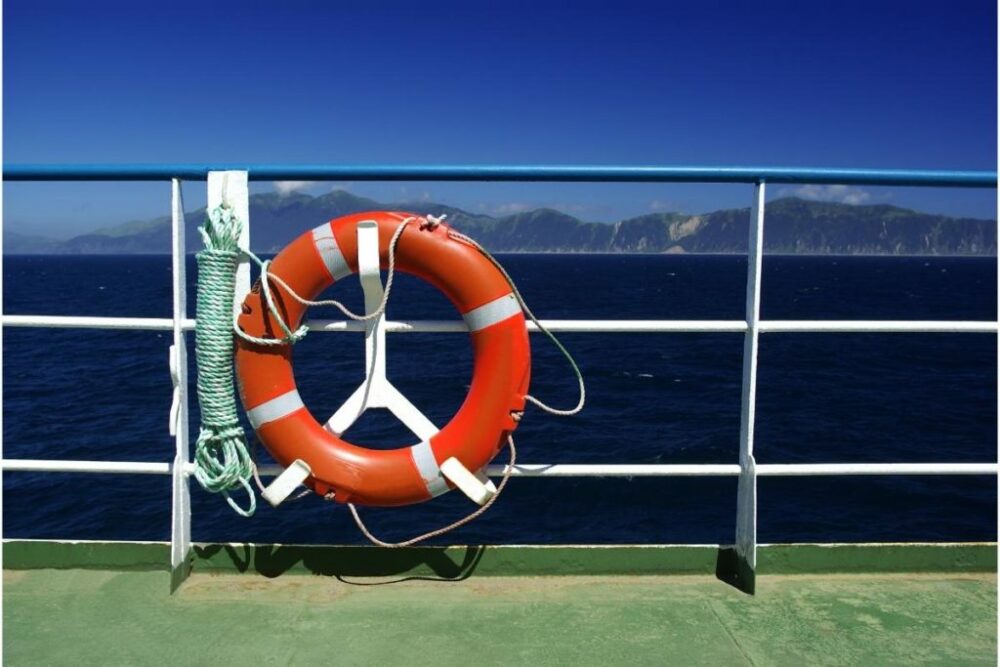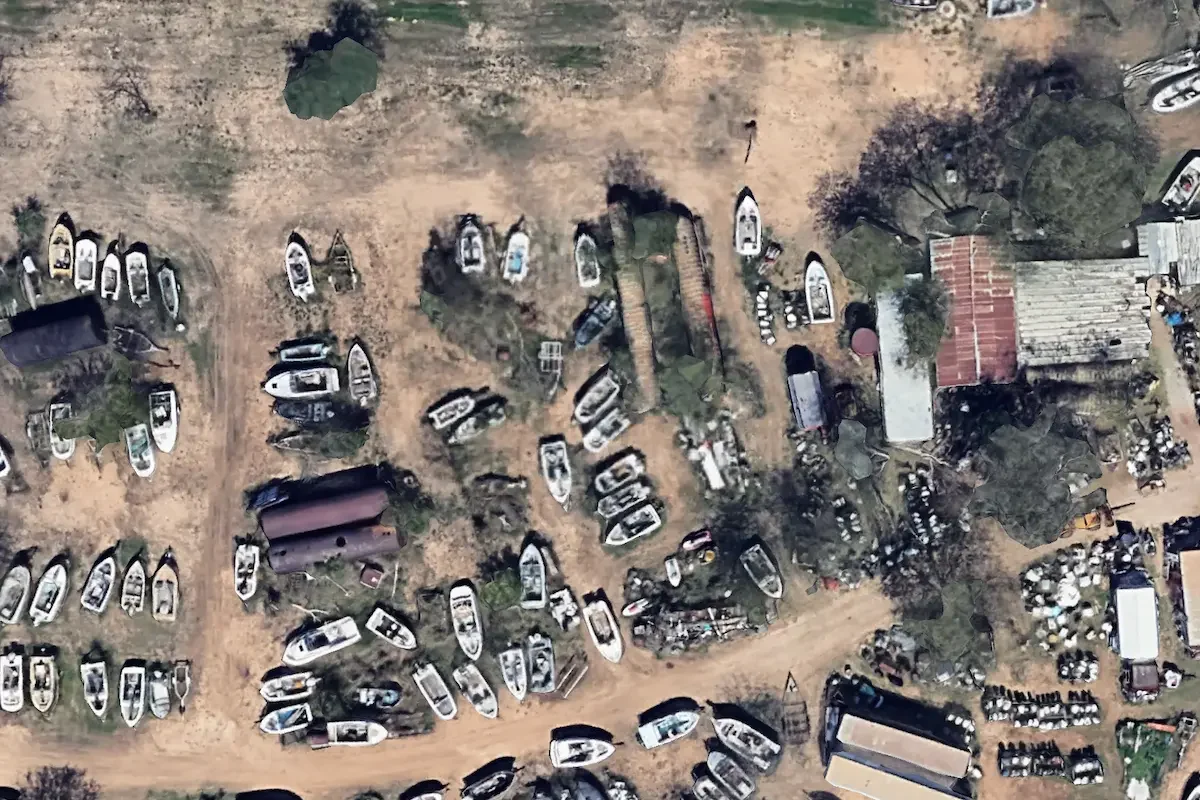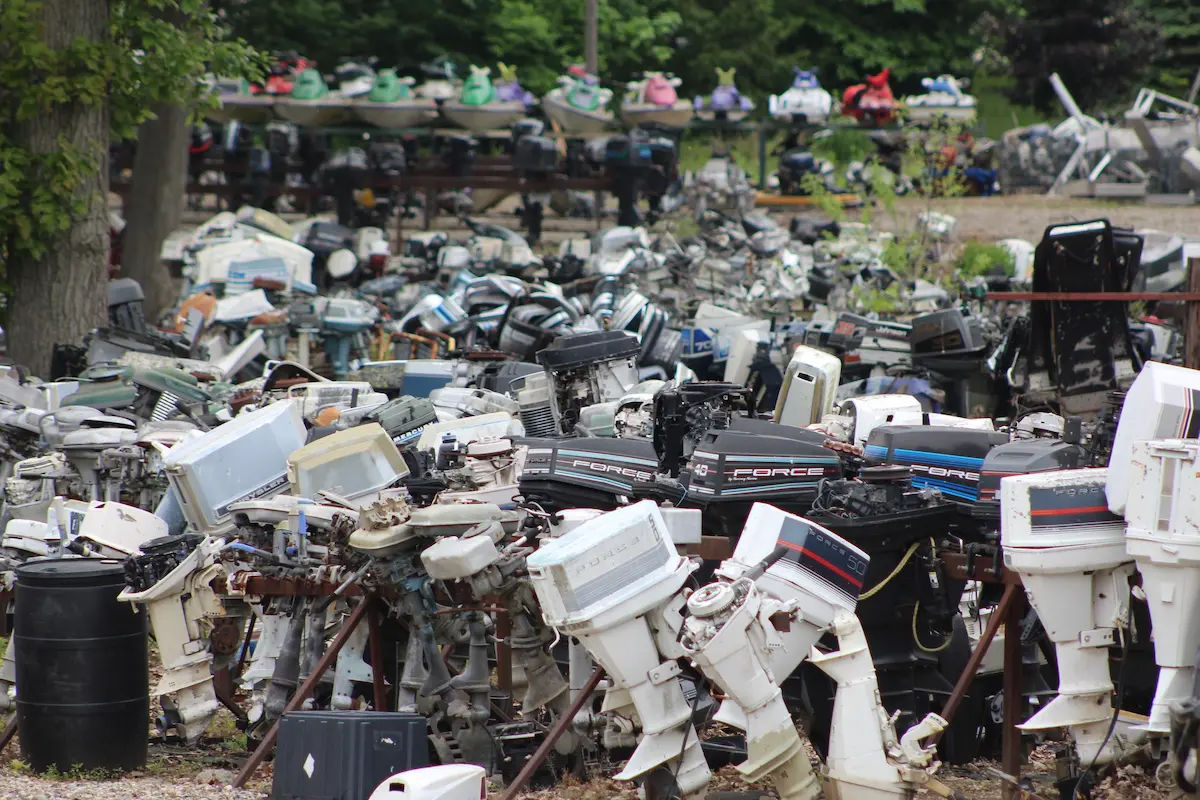Boat safety is critical, which is why every vessel must have a personal flotation device (PFD) installed. There are several types of personal flotation devices, one of which is Type IV, which may be flung into the water to keep someone afloat. Keeping this in mind, what is the primary benefit of the Type IV PFD?
The primary benefit of the Type IV PFD is that, since it is not designed to be worn, it may be used by anybody regardless of size, height, or weight, whether kid or adult. This kind of personal flotation device is designed to be given to an individual who has fallen overboard in order to save their life.
Numerous questions on boating license courses pertain to various forms of personal flotation devices, notably the Type IV. It’s perplexing, and many individuals are unsure about their genuine identity. Continue reading to discover more about the primary benefit of a Type IV personal flotation device, as well as the many variations and correct use.

What Are Type IV PFDs?
The United States Coast Guard classifies personal flotation devices (PFDs) as Type IV (USCG). PFDs of type IV should be worn at all times when on the water. It is not designed to be worn but to be tossed to someone who is drowning or unable to swim.
While the Type IV PFD cannot be used in lieu of a normal life jacket, it has been shown to be highly successful in emergency overboard situations. As with any other personal flotation device, the goal of this one is to keep a person afloat in the case of a boat breakdown or other emergency that leaves you in the water.
Additionally, a throwable floatable gadget is referred to as this floating thing. In swimming pools and commercial boats, it is referred to as a circular flotation ring. Any recreational vessel above 16 feet in length must have at least one Type IV personal floatation device.
Each traveler should be equipped with his or her own personal flotation device (PFD). It may include both wearables and throwables, but the wearables must be suitable for the passengers’ ages. Apart from adult and kid life jackets, don’t forget to include life jackets for any pets onboard!
There are three unique kinds of personal flotation devices classified as Type IV. While some manufacturers provide other varieties of Type IV PFDs, the following are the most common and are approved by the Coast Guard.
Ring Buoys: The vast majority of boats are fitted with ring buoys, which are personal flotation devices classified as Type IV (PFDs). On the majority of boats, docks, and even swimming pools, it is visible. PFDs of Type IV are now available with controlled lights. This is especially beneficial for night rescues.
Buoyant Cushions: These are square-shaped pillows with no holes. The buoyant cushion is unusual in that it has two straps that passengers can easily put their arms through to prevent the object from floating away. Tucking your arms into the straps, on the other hand, is not necessary. Simply float on top of the PFD by placing it under your chest. Additionally, you may use your legs to paddle and push through the water.
Horseshoe Buoys: As the name indicates, this flotation device is shaped like a horseshoe. Typically, they are constructed with a cell plastic core and a vinyl-coated surface. It comes in a number of colors, but the most popular are white, yellow, and red.
In the case of an emergency, a Type IV PFD is composed of naturally buoyant materials to provide extra buoyancy for humans, children, and even pets. Its purpose is to provide enough buoyancy to keep the wearer’s head above water.
The most common form is a ring-style PFD, which is often seen at marina entrances and on larger boats. Type IV PFDs, on the other hand, come in a range of shapes, including squares and horseshoes.
What Is The Main Advantage Of A Type IV PFD?

Some maintain that a Type IV PFD is superfluous, considering that everyone on the boat already wears a life jacket. Bear in mind, however, that a Type IV personal flotation device is distinct from other types. We have outlined the three primary benefits of a Type IV PFD below.
Ease of Use: Emergency situations need an immediate response. Unlike traditional PFDs, which must be worn and fitted before use, the Type IV PFD may be thrown to anybody in the water. This is due to the fact that a Type IV PFD is intended to be tossed, not worn.
There Are No Size Restrictions: Each passenger, regardless of age, height, or weight, is required to wear a Type IV personal floatation device (PFD). This kind of PFD is not designed to be worn but rather to act as a floating item to grasp or cling to in an emergency. Unlike women’s life jackets, which are tailored to a woman’s body shape, this flotation gear is not.
On the other hand, just because everyone aboard is wearing a Type IV PFD does not negate the need for life jackets. All passengers, including infants and animals, are required to wear a life jacket on the boat. Kind IV PFDs should always be used in conjunction with another kind of PFD or life jacket.
Numerous boaters report displeasure with alternative types of personal floatation devices owing to their weight and discomfort. Additionally, the user will have to exert a bit more effort to maintain his face above water as a consequence of the extra weight.
Type IV PFDs, on the other hand, are more lightweight and will not suffocate you in the water. It’s designed to provide the user greater mobility, since you may grab it any way you choose.
Toss and Tug: PFDs (such as the ring buoy) may be attached to a rope even while not in use. As a result, the rope is tossed along with it as it is launched at the drowning passenger. And it is with this rope that passengers onboard or any rescuer may apply pressure to the patient who is still wearing the Type IV PFD.
This is a much simpler form of rescue since it removes the need for the rescuer to leap into the water, swim to the victim, and then swim back to the boat with the victim. This type of back-and-forth swimming is very difficult and tiring for the rescuer. Additionally, both the victim and the saviour will be put in danger.
Bear in mind that not all Type IV PFDs come equipped with ropes. Ropes must be bought individually if the package does not contain them. Certain buoy makers either sell ropes separately or include them in their Type IV PFD kits.
This function is crucial since it not only aids the one who fell overboard but also eliminates the possibility of further individuals falling into the water. There is no longer a need for rescuers to enter the water and swim to the sufferer. To conduct the rescue, three basic motions are required: grip, toss and pull.
Location Indicator: In man-on-board scenarios, boat passengers may instantly throw the Type IV PFD to the victim’s particular position or the last area observed by the victim. This location signal may then be utilized to navigate the boat operator around the region, assisting in the coordination of a rescue.
This is when a personal flotation device for Type IV comes in handy. Discarding it into the water, it acts as a marker for the victim’s last sighting location – or, at the very least, the surrounding vicinity. This is a good starting point for rescuers and will guide the boat operator as they circle the location of the incident.
The primary concern is that this indicator is easily swept away by the currents or waves of the ocean, especially in open or tumultuous seas. In this scenario, tremendous waves, currents, and gale-force winds act as adversaries. Nonetheless, Type IV PFDs may attest to their use in such circumstances.
For example, it may assist the boat operator in recognizing the direction of the waves, and if the victim was wearing a wearable PFD, the man on board was very certainly swept away by the waves as well. This will help to narrow the search area somewhat, as opposed to indiscriminately exploring the area around the initial location of the victim’s fall.
Strength of Current Indicator: In open water, the PFD will be tossed around and may float away from the wearer, leaving it useless as a position marker or floating device.
However, it has another purpose: it aids the boat operator in detecting the current direction. If the victim was wearing a life jacket, establishing the direction in which he or she was snatched becomes much easier. This is a vital step in any rescue operation since it effectively limits the search area of the rescuers.
When the person who fell overboard is wearing a life jacket, the search area is reduced – it becomes easier to pinpoint the direction in which the sufferer was transported.
Things To Consider When Using Type IV PFDs

A Type IV PFD is not necessary for kayaking or canoeing. However, depending on the activity, the Coast Guard may demand the use of different kinds of life jackets or personal flotation devices (PFDs). If you’re kayaking, for example, you may wish to invest in kayak life jackets to safeguard the paddler’s safety.
Numerous paddlers carry buoyant pillows that may be utilized as seat or knee pads. This is not a wise move, since the added height may impair the kayak or canoe’s balance or security, destroying the buoyant cushion.
In the event of an emergency, type IV PFDs must be removed from their packaging and made readily accessible. It’s ideal if it already has a rope attached for easy rescue.
The Coast Guard requires that all boats longer than 16 feet have a Type IV PFD. There are no precise restrictions for the kind of throwable PFD (for example, buoyant cushion, horseshoe, or ring buoy) as long as the Coast Guard has authorized its use.
Everyone on board must be able to see the throwable PFD. It should not be stowed in lockers, behind the boat seat, in the cockpit, or in any other location that is concealed from view.
What makes a Type IV PFD notable is its price and endurance. As a consequence, avoid being too cheap and substitute a normal stadium cushion for a Type IV PFD. Bear in mind that a person’s life might be at stake.
A Kind IV PFD is the least effective type of paddling flotation gear available, and its usage as your only means of protection is not recommended.
Numerous kayakers and canoers rely on the boat cushion-style PFD to comply with the “one PFD per person” rule. When this kind of flotation device is convenient and may function as a seat/knee cushion while paddling, it is much too simple to get disassociated from it when the time comes to utilize it for its intended purpose.
PFDs are required while kayaking or canoeing, they are not required for anybody beyond the age of 13. Never connect a throwable flotation device to your kayak/canoe, since recovery will be difficult in an emergency. If you are kayaking or canoeing in open or choppy waters without access to help, you must use a Type III personal flotation device (PFD).
The majority of kayakers think that a Type IV PFD is unnecessary once they hit open water since they will be wearing a Type III PFD. They feel it is inefficient since it is heavy and the three-inch-thick seat cushion elevates the seat too far away from the seat, limiting the kayak’s stability. Notably, this throwable PFD may get lodged in the kayak’s cockpit, making emergency rescue difficult.
Investing in a well-fitting, high-quality life jacket, such as a Type III PFD, may considerably enhance your paddling experience. Numerous boaters report displeasure with alternative types of personal floatation devices owing to their weight and discomfort. Additionally, the user will have to exert a bit more effort to maintain his face above water as a consequence of the extra weight.
Type IV PFDs, on the other hand, are more lightweight and will not suffocate you in the water. It’s designed to provide the user greater mobility, since you may grab it any way you choose.
Whenever you are on calm, inland water, use it. Remaining inshore, where the water is often calm, will aid the PFD in accomplishing its mission of keeping you afloat. The PFD will be tossed about by waves, water currents, and even strong winds, and will likely drift away from the swimmer.
A Type IV PFD is only functional if there are other people capable of tossing and hauling you back onboard the boat. It’s an essential piece of safety equipment to have on hand while participating in activities like sailing regattas and canoeing.
Emergency situations need an immediate response. Unlike traditional PFDs, which must be worn and fitted before use, the Type IV PFD may be thrown at anybody in the water.
Final Thoughts
What is the primary benefit of a Type IV personal flotation device? Indeed, there are several benefits to summarise here.
To begin, there are no size constraints, allowing children and adults of all sizes, heights, and weights to use a basic Type IV PFD.
Second, it is a throwable flotation device that, when attached to a rope, allows the rescuer to quickly get the sufferer to the boat and assist them in exiting the water.
Finally, since this flotation device is not meant to be worn, it may be used to indicate the individual who went overboard starting position.
These are strong reasons to consider installing a Type IV PFD on your boat, even more so if you already have life jacket. It is critical that you maintain your safety aboard. After all, this kind of personal flotation device is not prohibitively costly, so there is no need to be fearful of investing.
Bear in mind that youngsters under the age of 13 must wear a life jacket at all times. Even if your state lacks a statute requiring kids to wear life jackets, the Coast Guard requirements apply. Additionally, keep in mind that personal flotation devices of Type IV are not a viable replacement for children’s life jackets.
- 11 Boat Salvage Yards in Texas – January 18, 2025
- 7 Boat Salvage Yards in Michigan – January 15, 2025
- Fire Hose SOLAS Requirements, Regulation 10: Ensuring Maritime Safety – January 9, 2025




